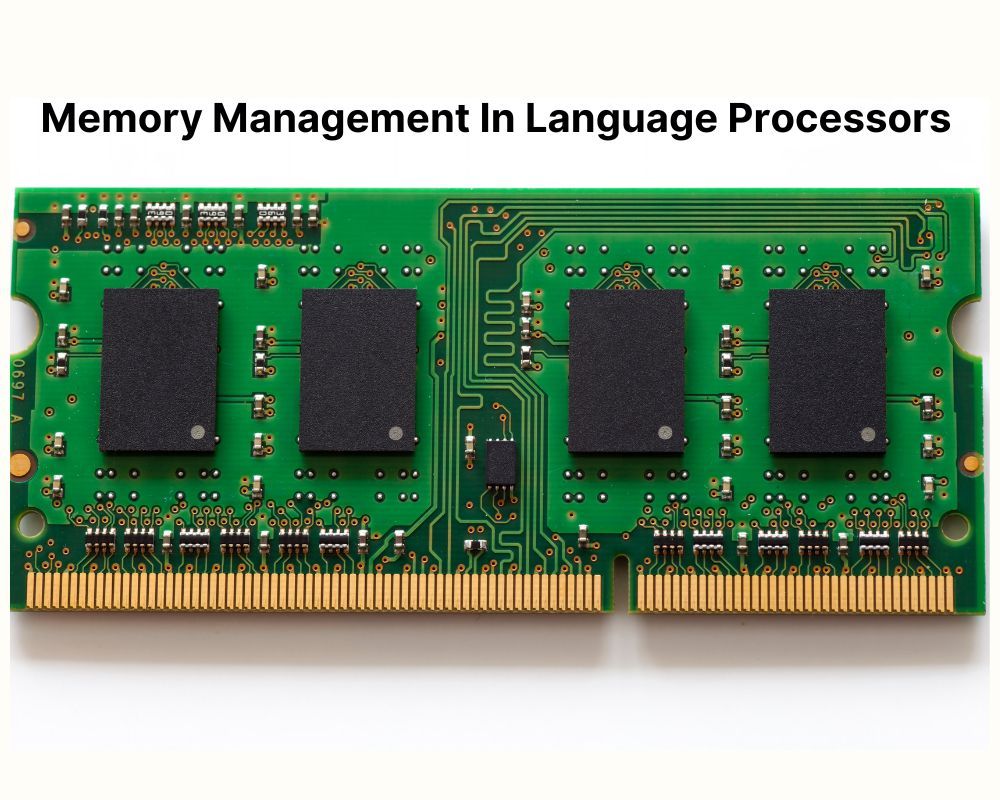- Definition Of Language Processors
- Understanding Language Processors
- Types & Functions Of Language Processors
- Compiler Vs. Interpreter - Key Differences
- Exploring Assembler In Language Processing
- Role Of System Software In Language Processing
- Memory & File Management In Language Processors
- Security Measures & Semantic Gaps
- Fundamentals Of Language Processor Design
- Execution Time & Memory Usage Optimization
- Frequently Asked Questions (FAQs)
What Is Language Processor: Types, Functions And More

Language processors, often overlooked, play a crucial role in today's technology. They drive various tools, from basic spell checkers to cutting-edge artificial intelligence. Understanding the mechanisms behind these complex systems can offer valuable insights into how the digital realm operates.
Definition Of Language Processors
Language processors are software tools that translate high-level programming languages into machine code that computers can understand and execute.
Programmers can utilize language processors like compilers, interpreters, and assemblers to write code in a way that is easier for humans to understand yet still functional on computer systems.
Understanding Language Processors
To begin with, let us understand the components and importance of language processors:
Components Of Language Processors
Language processors are vital in converting human-readable code into machine-executable instructions. They consist of various components that work together to translate, analyze, and execute code efficiently. These components include lexical analyzers, parsers, semantic analyzers, and code generators.

Lexical analyzers break down the code into tokens like keywords, identifiers, constants, etc., making it easier for further processing by the compiler.
Parsers then check if the syntax is correct according to the programming language's grammar rules.
Semantic analyzers verify if the statements have a meaningful interpretation within the language's context. Lastly, code generators produce machine instructions based on all previous analyses.
Importance In Programming Languages
Language processors play a crucial role in both developing and executing programming languages. Without them, programmers would need to write complex machine-level instructions directly instead of high-level languages like Java or Python.
Types & Functions Of Language Processors
Let us now study the two important types of language processors:
Compilers
Compilers convert entire programs into machine code. When a programmer creates a program in Java, the compiler changes all the code into machine language for the computer to comprehend.
Interpreters
Interpreters read each line of code and execute it immediately. This means that errors are detected as soon as they occur during execution.
Imagine writing a script in Python; when you run it using an interpreter, any syntax errors will be caught instantly.
Functions Of Language Processors
Language processors carry out various functions to ensure the correct execution of programs. These include the following:
Lexical Analysis: Breaking down code into tokens like keywords or identifiers
Syntax Analysis: Ensuring proper grammar rules are followed
Semantic Analysis: Checking for logical errors
Code Generation: Producing executable code
Optimization: Enhancing program efficiency
Compiler Vs. Interpreter - Key Differences
Let us study the key differences and similarities between compiler and interpreter:
Execution Process
Compilers produce executable files, while interpreters directly execute code without generating an intermediate file. Compilers convert the entire program beforehand for faster execution.
Code Optimization & Performance
Compilers optimize code during translation, potentially leading to better performance than interpreters, which do not perform optimization.
Exploring Assembler In Language Processing
Let us study the role of assemblers in language processing:
Converting Assembly Language
Assemblers play a crucial role in converting assembly language into machine code. This conversion is vital as computers only understand instructions in binary form.
By translating human-readable assembly language into machine-understandable code, assemblers facilitate the execution of tasks on a computer.
Assemblers are designed to handle low-level instructions specific to a particular processor architecture. They decode mnemonic codes representing machine instructions and convert them into their corresponding binary format.
For example, an assembler would translate an instruction like "ADD" from assembly language to its binary equivalent for the computer's processor to execute.
Simplifying Programming Tasks
Utilizing mnemonic codes provides a more straightforward way for programmers to write programs in assembly language. Instead of dealing directly with complex binary representations, they can use mnemonics that resemble English words or abbreviations.
This simplification streamlines programming activities and enhances productivity by allowing programmers to focus on coding logic rather than intricate details of machine code translation.
Role Of System Software In Language Processing
Let us study the role of system software in language processing:
Platform For Language Processors
System software provides a foundation for language processors to operate. It serves as the environment where these programs can run effectively. The system software acts as a bridge between the hardware and the language processing applications.
For example, it handles memory allocation to ensure that each running program gets enough memory space to function correctly.
Language processors can efficiently read and write data thanks to the file management services offered by system software.
Critical Functionalities
The efficient operation of language processors relies heavily on system software functionalities like process scheduling. This ensures that different processes get their fair share of CPU time, preventing any one program from monopolizing resources.
Moreover, system software oversees input/output operations and error handling within language processors, contributing to their smooth functioning.
Memory & File Management In Language Processors
Let us now explore memory and file management in language processors:
Memory Management
Memory management in language processors involves efficiently allocating and deallocating memory resources for program execution. This process ensures that programs run smoothly without running out of memory.

Efficient memory management is crucial for preventing issues like memory leaks or inefficient memory usage, which can slow down the performance of language processors. Language processors can enhance their speed and overall efficiency by adequately managing memory.
For instance, when a program requests memory to store data temporarily, the memory manager allocates the necessary space.
File Management
File management plays a vital role in handling file-related operations during language processing. It includes tasks such as reading data from files, writing output to files, and managing file access permissions. When a program needs to read input from a file or save results to an output file, the file manager facilitates these actions.

Without efficient file management capabilities, language processors may encounter errors when reading or writing data from files. Proper file management ensures language processors can interact with external files seamlessly, enhancing their functionality and versatility.
Security Measures & Semantic Gaps
Let us study the security measures and semantic gaps in language processors:
Security Measures
Language processors utilize security measures such as sandboxing and access control to prevent unauthorized code execution. Sandboxing restricts a program's actions, ensuring it stays within defined boundaries.
Access control manages permissions, determining who can view or modify specific resources. These measures protect systems from malicious attacks and maintain data integrity.
Implementing these security measures is vital for safeguarding sensitive information and preventing exploits that could compromise the system's integrity.
For example, by restricting file access through access control mechanisms, language processors can prevent unauthorized users from tampering with critical files or executing harmful commands.
Semantic Gaps
Semantic gaps arise when a language processor cannot fully interpret the semantics of a programming language, potentially leading to errors or limitations in program execution.
Addressing semantic gaps is essential for ensuring accurate program execution without unexpected behaviors caused by misinterpretations of code specifications.
Fundamentals Of Language Processor Design
Let us also study the fundamentals of language processor design:
Syntax & Semantics
Language processors involve defining the syntax and semantics of a programming language. This ensures the correct interpretation of the code. Lexical analyzers break down code into tokens, while parsers check the syntax structure.
Establishing clear rules for syntax assists in identifying errors. For instance, the compiler will detect a missing semicolon at the conclusion of a line in C++ and indicate it as an error.
Efficiency & Compatibility
Efficient language processors optimize compilation time and memory usage. They streamline processes like parsing to enhance performance during code execution.
Compatibility with target hardware or software environments is crucial for seamless operation. A compiler designed for Windows should generate executable files that work smoothly on Windows systems without compatibility issues.
Execution Time & Memory Usage Optimization
Lastly, let us study the execution time and memory usage optimization:
Optimizing Execution Time
Efficient time management in language processors involves various strategies. Code optimization enhances the code's efficiency, making it run faster.
Parallelization allows multiple tasks to be executed simultaneously, boosting overall performance. Algorithmic improvements refine the underlying algorithms for quicker processing.
Optimizing execution time is crucial as it directly impacts the speed of processing tasks. By employing these techniques, language processors can enhance their responsiveness and productivity significantly.
Memory Usage Optimization
Reducing memory usage in language processors is vital for optimal performance. Data compression techniques help minimize the space required to store data efficiently.
Implementing efficient data structures ensures that memory is utilized effectively. Garbage collection eliminates unnecessary data objects, freeing up memory resources for other operations.
Memory usage optimization plays a significant role in enhancing language processors' overall efficiency and effectiveness by ensuring that they operate smoothly without excessive memory consumption.
Are you looking to upscale your coding prowess? If so, you can do it right away by clicking on the link that provides 100 days of coding sprint!
Conclusion
We learned about language processors, like compilers and interpreters, and their functions. We also discussed assemblers, system software, memory, file management, security, and semantic gaps in language processing.
We talked about designing language processors and ways to make them faster and use less memory. Learning about language processors helps us understand how they work and why they are essential in making software.
Frequently Asked Questions (FAQs)
1. What are language processors?
Language processors are software programs that convert high-level programming languages into machine code for computers to understand. They include compilers, interpreters, and assemblers.
2. How do compilers and interpreters differ in language processing?
Compilers translate the entire program at once and produce an executable file, while interpreters translate code line by line without generating a separate executable.
3. Why is understanding memory management important in language processors?
Efficient memory management ensures optimal performance of programs by allocating and deallocating memory effectively during execution.
4. What role does system software play in language processing?
System software provides essential functions such as managing hardware resources, interfacing with the user, and enabling communication between software applications and hardware devices.
5. How can semantic gaps be addressed in language processors for better security measures?
Semantic gaps in language processors can be addressed for better security measures by implementing advanced natural language processing algorithms that can accurately interpret and analyze the context of the text, thereby reducing the risk of misinterpretation and improving overall security.
Suggested reads:
- Register Memory: Types, Functions & Differences Explained
- Application Of Computer Graphics: Top 10 Uses Explained
- Entry Control Loop And Exit Control Loop In C Explained (With Codes)
- Transpose Of A Matrix In C | Properties, Algorithm, Examples & More!
- Virtual Memory In Computer Architecture | Concept & Purpose
Instinctively, I fall for nature, music, humor, reading, writing, listening, traveling, observing, learning, unlearning, friendship, exercise, etc., all these from the cradle to the grave- that's ME! It's my irrefutable belief in the uniqueness of all. I'll vehemently defend your right to be your best while I expect the same from you!
Login to continue reading
And access exclusive content, personalized recommendations, and career-boosting opportunities.
Subscribe
to our newsletter
















Comments
Add comment